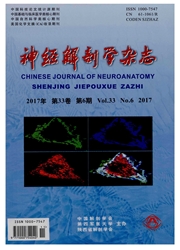

 中文摘要:
中文摘要:
目的研究不同呼吸模式对心血管调节系统的影响。方法对16名健康的大学生采集心电、血压和呼吸信号,采用频谱分析方法和基于Volterra—Wiener级数的非线性方法分析自主呼吸、控制呼吸和屏气对心血管调节的影响。结果与自主呼吸模式相比,10次/分钟的控制呼吸使心率变异性的非线性特性定性和定量上均显著降低,而自主呼吸节律的控制呼吸的非线性特性定性上无显著差异,但定量上仍然显著降低。这些结果提示自主呼吸是保持心肺耦合的最优呼吸模式。
 英文摘要:
英文摘要:
Purpose To investigate the effects of breathing patterns on cardiovascular regnlation. Method Spontaneous breathing ( SB), breath holding (BH) and paced breathing at rate of 10 min ^-1 ( PB1 ) or spontaneous rate (PB2) were adopted to record the signals of ECG, blood pressure and respiration in 16 healthy student volunteers. The spectral indices and the nonlinearity of heart rate variability (HRV) were analyzed to compare the different effect of breathing patterns. Results Compared with spontaneous breathing, PB1 obviously diminished the nonlinearity of HRV both qualitatively and quantitatively as detected by the Volterra - Wiener series method, whereas the nonlinearity at PB2 decreased only quantitatively, but not qualitatively. These results indicate that the spontaneous breathing optimizes the cardiopulmonary coupling.
 同期刊论文项目
同期刊论文项目
 同项目期刊论文
同项目期刊论文
 Guo-Qiang Wu, Natalia M. Arzeno, Lin-Lin Shen , Da-Kan Tang, Da-An Zheng, Nai-Qing Zhao, Dwain L. Ec
Guo-Qiang Wu, Natalia M. Arzeno, Lin-Lin Shen , Da-Kan Tang, Da-An Zheng, Nai-Qing Zhao, Dwain L. Ec 期刊信息
期刊信息
